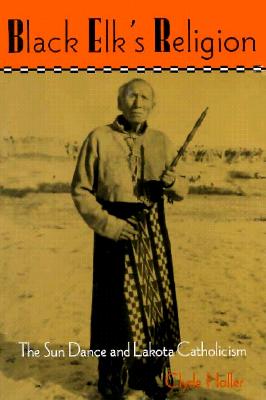In this religious history of the spiritual life of the great Lakota leader Black Elk, Clyde Holler reconstructs the development of the Lakota Sun Dance--the central religious ritual of the Lakota tradition, which is essential to understanding Black Elk’s thought. This comprehensive study of the dance, which was banned by the U.S. government in 1883, shows how Black Elk adapted the dance to the conditions and circumstances of reservation life and reinterpreted it in terms commensurate with Christianity. A creative thinker, rather than a passive informant on his people’s past, Black Elk was both a sincere traditionalist and a sincere Christian, seeing the two religious traditions as expressions of the sacred.
Through a firsthand account of the dance associated with Frank Fools Crow at Three Mile Camp, near Kyle, South Dakota, the author demonstrates how the contemporary Sun Dance reflects Black Elk’s vision. Holler ’s book is a penetrating model of philosophical engagement with native North American religion that is carried out in close dialogue with anthropology. Readers who were captivated by John G. Neihardt’s gripping portrait of Black Elk in Black Elk Speaks may be surprised to learn that he was a vital and creative leader until his death in 1950, and not the broken, despairing old man made famous by Neihardt. As the greatest native American religious thinker of North America, much has been written about Black Elk, his life and influence; but of those works, Roller’s is likely to stand out as the most capacious in breadth and analysis.| FindBook |
有 1 項符合
Black Elk’s Religion: The Sun Dance and Lakota Catholicism的圖書 |
 |
Black Elk’s Religion: The Sun Dance and Lakota Catholicism 作者:Holler 出版社:Syracuse University Press 出版日期:1995-11-01 語言:英文 規格:平裝 / 246頁 / 23.1 x 15.5 x 2 cm / 普通級 |
| 圖書館借閱 |
| 國家圖書館 | 全國圖書書目資訊網 | 國立公共資訊圖書館 | 電子書服務平台 | MetaCat 跨館整合查詢 |
| 臺北市立圖書館 | 新北市立圖書館 | 基隆市公共圖書館 | 桃園市立圖書館 | 新竹縣公共圖書館 |
| 苗栗縣立圖書館 | 臺中市立圖書館 | 彰化縣公共圖書館 | 南投縣文化局 | 雲林縣公共圖書館 |
| 嘉義縣圖書館 | 臺南市立圖書館 | 高雄市立圖書館 | 屏東縣公共圖書館 | 宜蘭縣公共圖書館 |
| 花蓮縣文化局 | 臺東縣文化處 |
|
|
圖書介紹 - 資料來源:博客來 評分:
圖書名稱:Black Elk’s Religion: The Sun Dance and Lakota Catholicism
|










